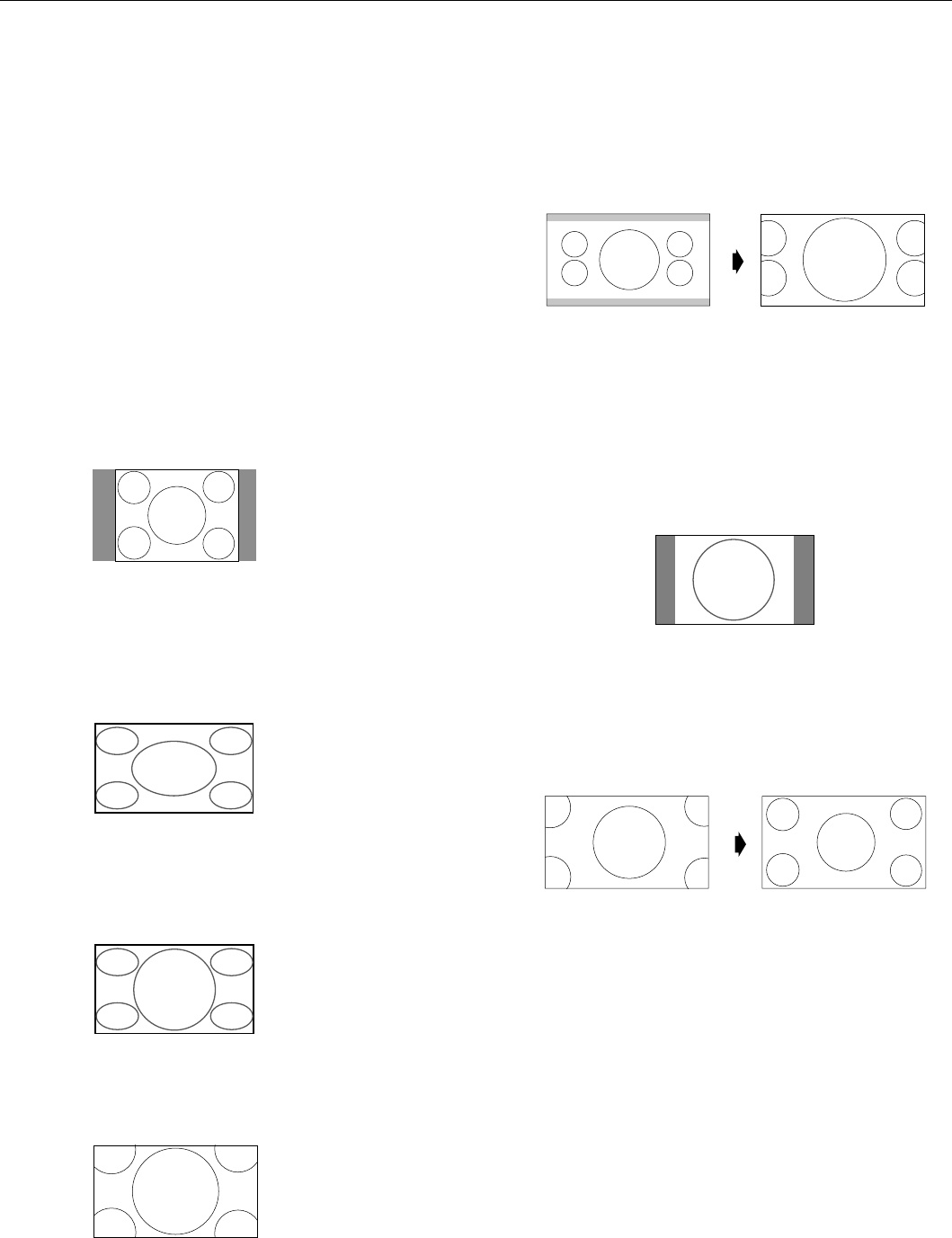
English-19
Operation
Picture Size Using Video Signals
Select one of seven picture sizes manually.
While viewing videos or digital video discs, perform the
following actions:
1. Press the SIZE button on the remote control.
2. To switch the screen sizes, press the SIZE button again
within 3 seconds. e available sizes are NORMAL, FULL,
DYNAMIC, ZOOM, 2.35:1, 14:9, and UNDERSCAN.
If a 720p, 1080i, or 1080p signal is displayed, the available
sizes are FULL, 2.35:1, DYNAMIC, and UNDERSCAN.
If displaying an enhanced split-screen, the available sizes are
NORMAL and FULL.
NORMAL (4:3)
Images with a 4:3 (Normal) aspect ratio are displayed.
FULL
Horizontally expands anamorphic signals to display the
correct linearity.
Normal (4:3) images are horizontally expanded to ll the
entire screen.
DYNAMIC
Vertically and horizontally expands the picture but at
di erent aspect ratios.
ZOOM
Vertically and horizontally expands the picture while
maintaining the correct aspect ratio.
2.35:1
Image is expanded at a 2.35:1 ratio to ll the entire screen.
e screen is lled vertically; however, some information
will be lost on the le and right sides of the image.
Available for the following inputs:
Video, Component, or RGB input (480I, 480P, 576I, 576P,
720P, 1080I, 1080P)
To avoid image retention, use the 2.35:1 image size if black
bars are displayed at the top and bottom of the screen
showing the displayed image.
14:9
Image is displayed at a 14:9 aspect ratio.
Available for the following inputs:
Video, Component, or RGB input (480I, 480P, 576I, 576P)
UNDERSCAN
Standard televisions crop (Underscan) images. Utilize the
UNDERSCAN function in the SCREEN menu to display the
entire image.
NOTE: Depending on the type of component used, black
borders or signal noise may appear near the screen
edges while in UNDERSCAN mode.
Over a period of time, image ghosting, shadowing,
or burn-in may result from continuous display of
underscanned images. While in UNDERSCAN
mode, the brightness may change if a Macrovision
signal is input.
NOTE: Do not display 4:3 content in NORMAL mode for
extended periods of time to avoid image ghosting,
shadowing, or burn-in.


















